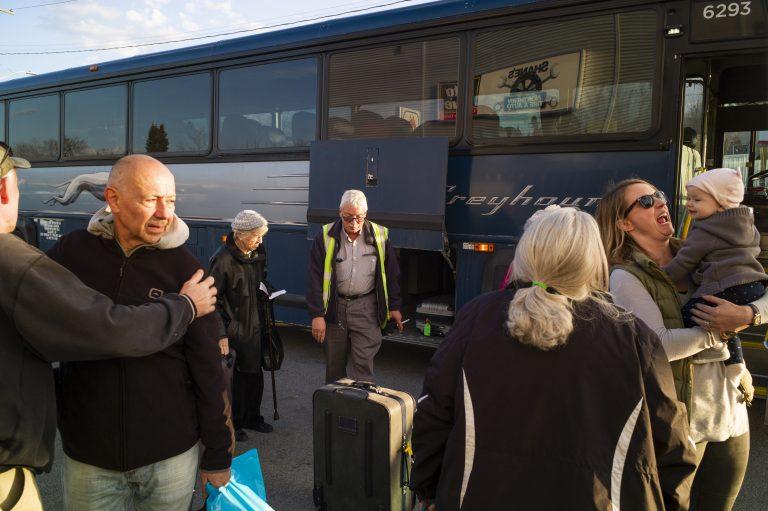Greyhound says goodbye to western Canada
End of an era: Passengers say goodbye to friends and family as they board a westbound Greyhound in Kenora, Ont.

Final stop
It was how you were reunited with Grandma, that ninth-grade boyfriend you met at Bible camp and your college roommate who never left his shaggy-hair stage. For generations, the Greyhound bus was the ride of choice (usually the only choice) for many people—a lifeline in remote small towns and First Nations communities. On Oct. 31, Greyhound shuttered service across most of Canada, from B.C. to northern Ontario (including Kenora, Ont., where the bus pictured here stopped), citing a long, steep plunge in ridership. On many western routes, smaller carriers have filled in gaps, perhaps with their own scratchy coach seats and gruff drivers whose every break is a smoke break. But several communities will go unserved. And the bus that connected Vancouver to Montreal in three and a half days for $300 (less for students) will never roll again. (Words by Jason Markusoff; Photo by Ian Willms)
Share
It was how you were reunited with Grandma, that ninth-grade boyfriend you met at Bible camp and your college roommate who never left his shaggy-hair stage. For generations, the Greyhound bus was the ride of choice (usually the only choice) for many people—a lifeline in remote small towns and First Nations communities. On Oct. 31, Greyhound shuttered service across most of Canada, from B.C. to northern Ontario (including Kenora, Ont., where the bus pictured stopped), citing a long, steep plunge in ridership. On many western routes, smaller carriers have filled in gaps, perhaps with their own scratchy coach seats and gruff drivers whose every break is a smoke break. But several communities will go unserved. And the bus that connected Vancouver to Montreal in three and a half days for $300 (less for students) will never roll again.
READ MORE: Small town Canada is dying. This is sad—but not tragic.